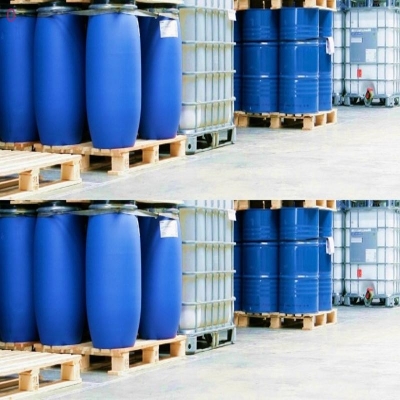-
Categories
-
Pharmaceutical Intermediates
-
Active Pharmaceutical Ingredients
-
Food Additives
- Industrial Coatings
- Agrochemicals
- Dyes and Pigments
- Surfactant
- Flavors and Fragrances
- Chemical Reagents
- Catalyst and Auxiliary
- Natural Products
- Inorganic Chemistry
-
Organic Chemistry
-
Biochemical Engineering
- Analytical Chemistry
- Cosmetic Ingredient
-
Pharmaceutical Intermediates
Promotion
ECHEMI Mall
Wholesale
Weekly Price
Exhibition
News
-
Trade Service
【Hot attention from Chemical Machinery and Equipment Network ] Think that porcelain is just squeezed with soil and burned and finished? Can't connect with technology? In fact, when the imperial kiln porcelain came out hundreds of years ago, advanced science and technology had already been used
.
Hot attention of Chemical Machinery Equipment NetworkChemical machinery and equipment.
Speaking of porcelain, one must mention the official kiln
.
The official kiln has been marked with the noble label of "exclusive to the emperor" since its inception
.
The Jingdezhen Imperial Kiln Factory gathers pottery elites and skilled craftsmen
.
Although they made porcelain for the emperor's family, they actually created a large number of top-notch rare treasures for the Chinese nation
.
"Jingdezhen Taolu" records: "Today, the pottery is beautiful and prepared, the workmanship is good, the color is perfect, the antique method is first, the flower sample >
.
And the imperial kiln supervises the manufacture, especially Beyond the past
.
"
.
The official kiln has been marked with the noble label of "exclusive to the emperor" since its inception
.
The Jingdezhen Imperial Kiln Factory gathers pottery elites and skilled craftsmen
.
Although they made porcelain for the emperor's family, they actually created a large number of top-notch rare treasures for the Chinese nation
.
"Jingdezhen Taolu" records: "Today, the pottery is beautiful and prepared, the workmanship is good, the color is perfect, the antique method is first, the flower sample >
.
And the imperial kiln supervises the manufacture, especially Beyond the past
.
"
In recent years, as the country attaches importance to the development and application of science and technology, the use of science and technology to conduct comprehensive research on cultural relics has been continuously strengthened
.
Cultural relic identification refers to the process of using scientific methods to analyze and identify the age, authenticity, texture, purpose and value of cultural relics
.
Among various identification methods, non-destructive testing technology is currently showing a trend of rapid development
.
.
Cultural relic identification refers to the process of using scientific methods to analyze and identify the age, authenticity, texture, purpose and value of cultural relics
.
Among various identification methods, non-destructive testing technology is currently showing a trend of rapid development
.
Due to the age of the cultural relics, most of them are relatively fragile and fragile.
Therefore, non-destructive testing technology can be used to obtain information on the authenticity, material, processing technology and artistic >
.
The test principle is to use advanced spectroscopy technology to prepare the chemical composition of the raw materials in the article, such as the chemical composition ratio of glaze in porcelain, the ratio of copper in bronze, the ratio of gold and silver in gold and silver, and the ratio of trace elements.
jade texture component content value, the value of the content of other keratinous vessel exfoliants
.
Therefore, non-destructive testing technology can be used to obtain information on the authenticity, material, processing technology and artistic >
.
The test principle is to use advanced spectroscopy technology to prepare the chemical composition of the raw materials in the article, such as the chemical composition ratio of glaze in porcelain, the ratio of copper in bronze, the ratio of gold and silver in gold and silver, and the ratio of trace elements.
jade texture component content value, the value of the content of other keratinous vessel exfoliants
.
Perform measurement and spectral analysis, and compare the data obtained from the test with the standard data in the national cultural relics database, and accurately locate the detector according to the subtle composition differences caused by different ages, different regions, different textures and even different geological characteristics Information such as the year and place of origin
.
Therefore, it is the most advanced, most scientific, most accurate and also the most widely recognized testing instrument in the world
.
.
Therefore, it is the most advanced, most scientific, most accurate and also the most widely recognized testing instrument in the world
.
The specific method of detection is to put the utensils or samples taken from the utensils into the machine, select appropriate spectroscopy heads according to the utensils of different textures, and after vacuuming, the machine starts the spectrum test to detect the chemical components contained in the utensils.
Or its substance content, and then compare the tested data with the data of the national cultural relics database to obtain a comparison result and issue a test report
.
Or its substance content, and then compare the tested data with the data of the national cultural relics database to obtain a comparison result and issue a test report
.
Porcelain thermoluminescence detection and identification technology is a high-tech technology, recognized and accepted by world-famous auction companies and major museums in the world, and can be used as evidence of dating recognized by the courts in Europe and the United States
.
However, the average domestic collectors still lack understanding of the thermoluminescence detection and identification technology of porcelain, and are not familiar with its scientific principles and practical applications
.
For this reason, we make some popular explanations on the thermoluminescence detection and identification technology of porcelain
.
.
However, the average domestic collectors still lack understanding of the thermoluminescence detection and identification technology of porcelain, and are not familiar with its scientific principles and practical applications
.
For this reason, we make some popular explanations on the thermoluminescence detection and identification technology of porcelain
.
To put it simply, ancient ceramics continuously absorb and accumulate external radiation energy from the day it is fired.
This energy is related to the length of time after firing
.
Porcelain thermoluminescence detection and identification technology method is to determine the length of the firing time by measuring the radiant energy accumulated in this ancient ceramic to achieve the purpose of dating
.
It uses the energy accumulated by the crystal after being exposed to radiation, which is re-released in the form of light during the acceleration process to test the chronology
.
This energy is related to the length of time after firing
.
Porcelain thermoluminescence detection and identification technology method is to determine the length of the firing time by measuring the radiant energy accumulated in this ancient ceramic to achieve the purpose of dating
.
It uses the energy accumulated by the crystal after being exposed to radiation, which is re-released in the form of light during the acceleration process to test the chronology
.
Quartz crystals have a long half-life (109 years), and they can be regarded as radioactive sources that provide a constant dose of radiation each year
.
Mineral crystals in ceramics such as quartz, feldspar, calcite and other lattice defects will generate free electrons when they are irradiated by the αβγ rays emitted by the above-mentioned radionuclides, and these electrons are trapped and accumulated by the crystal traps
.
When the quartz and feldspar grains are heated to a certain level, these trapped electrons will escape from the crystal trap and release energy in the form of light emission, which is thermoluminescence
.
The stronger the thermoluminescence emitted by a pottery sample when it is heated, the longer its age, and vice versa
.
When the pottery is fired, it has gone through a high temperature of more than 500 ℃, and the mineral crystals in the clay release the thermoluminescence originally stored
.
After the release, it continues to receive fixed radiation energy with a constant storage size
.
These radiant energy begin to increase after the pottery is fired, and can be used as a sign of the age of the pottery
.
.
Mineral crystals in ceramics such as quartz, feldspar, calcite and other lattice defects will generate free electrons when they are irradiated by the αβγ rays emitted by the above-mentioned radionuclides, and these electrons are trapped and accumulated by the crystal traps
.
When the quartz and feldspar grains are heated to a certain level, these trapped electrons will escape from the crystal trap and release energy in the form of light emission, which is thermoluminescence
.
The stronger the thermoluminescence emitted by a pottery sample when it is heated, the longer its age, and vice versa
.
When the pottery is fired, it has gone through a high temperature of more than 500 ℃, and the mineral crystals in the clay release the thermoluminescence originally stored
.
After the release, it continues to receive fixed radiation energy with a constant storage size
.
These radiant energy begin to increase after the pottery is fired, and can be used as a sign of the age of the pottery
.
The thermoluminescence test is the time elapsed since the last time the utensil was heated
.
The internal radioactive material content of each pottery is different from the external radiation dose
.
The effects of radioactive rays from the soil around the buried underground on pottery are different
.
Therefore, it is necessary to measure the respective annual doses of the utensils, the αβ dose provided by the radioactive material inside the pottery, and the γ dose provided by the buried soil and the annual dose of cosmic rays provided by the universe, and then the comprehensive calculation can be carried out
.
.
The internal radioactive material content of each pottery is different from the external radiation dose
.
The effects of radioactive rays from the soil around the buried underground on pottery are different
.
Therefore, it is necessary to measure the respective annual doses of the utensils, the αβ dose provided by the radioactive material inside the pottery, and the γ dose provided by the buried soil and the annual dose of cosmic rays provided by the universe, and then the comprehensive calculation can be carried out
.
Since the time information of the device is completely stored in itself, it can be dated only by sampling and testing on the device, and it is not necessary to compare with the unearthed sample data at the kiln site, so this is an absolute method of dating.
Very accurate and reliable
.
Very accurate and reliable
.
Ancient ceramics identification technology is a complex system engineering, and it can only take a multi-disciplinary and multi-method integrated road
.
The traditional appearance observation based on expert experience must be organically combined with the element identification method and the aging identification method in order to fully confirm the authenticity of a certain ancient ceramic, so that the majority of collectors and consumers are free from the trouble of counterfeiting
.
Only in this way can China's ancient ceramics appraisal level truly stand in the forefront of the world
.
.
The traditional appearance observation based on expert experience must be organically combined with the element identification method and the aging identification method in order to fully confirm the authenticity of a certain ancient ceramic, so that the majority of collectors and consumers are free from the trouble of counterfeiting
.
Only in this way can China's ancient ceramics appraisal level truly stand in the forefront of the world
.
Source: Science and Technology Daily, Personal Library
Original title: How to identify beautiful ancient ceramics? Spectral analysis and other technologies to help







